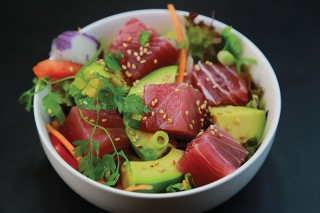
Gold Medal Classroom 2018 Article Index
30 November 2018Miss one GMC story and you may miss a valuable culinary resource.
By Lisa Parrish, GMC Editor
Gold Medal Classroom (GMC) is a culinary educator’s regular and reliable resource. Each month instructors discover informative articles focusing on topics from flavor trends to new applications ready for teaching in culinary kitchens. Culinary columnists present ideas on teaching students at all levels, from high school to four-year degree programs as well as topics which appeal to program directors and deans.
Miss an edition and you may have bypassed valuable, useable information. Many articles contain links to additional resources such as web sites and videos that may be helpful in classroom instruction.
Peruse the list of 2018 GMC articles. Read stories you may have missed or refresh yourself on columns you found interesting. Look for features that focus on the movers and shakers in the culinary industry, tips and ideas for classroom instruction, and instructional resources from the foodservice industry.
Did you miss any articles from the new-this-year series, Meet the Growers? If so, look through that section and discover where food comes from.
Think Tank, 50 Minute Classroom, Mayo’s Clinic and David Pazmino’s Guest Column series are indexed and available for you to read, re-read and learn something new.
Each month CAFÉ sends an edition announcement informing you there are new stories on the website www.CafeMeetingPlace.com. If you are not receiving these emails, please click here to register for the notice. You won’t miss another GMC story in 2019!
FEATURE ARTICLES
People doing interesting things.
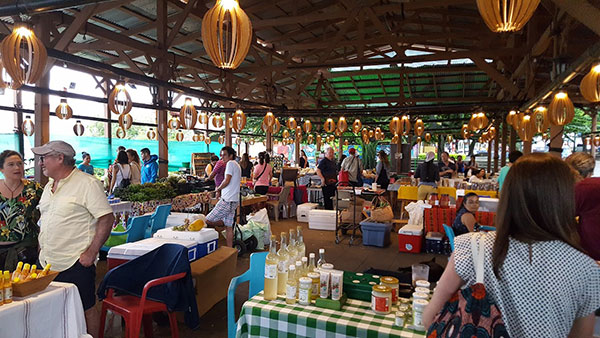
- NC culinary educators traveled to Costa Rica for an immersive experience in Latin American food culture and food system education.
- A foodservice service partnership featuring jobs needing to be filled with people needing jobs.
- Chef Akhtar Nawab takes the international foods trend to a higher level with creativity and personal experience. Indian-inspired Mexican cuisine the next world-food niche?
- Liquid nitrogen infused dessert helped illustrate how ice cream and science work together in winning ProStart management concept.
- Butter poached lobster and raspberry dark chocolate Bavarian earn Missouri high schoolers accolades and top honors in ProStart national cooking competition.
- CAFÉ’s scholarships and awards recognize culinary instructors for achievements both in and out of classroom kitchens.
Tips and ideas for classroom lessons.
- Teaching traditional pickling and fermenting with resources and flavors for onions, mangos, grapes and watermelon.
- Teaching culinary students about the versatility of fresh pears from pear and gorgonzola ice cream to salads and cocktails.
- Versatile and authentic Hispanic-style cheeses are distinctive in applications from a reverse quesadilla to umami popcorn.
- Bowls keeps booming with these versatile dishes appearing in all day parts in cuisine from international to traditional.
- Using fresh ingredients isn’t just trendy – it’s essential. Read insightful tips for farmers market browsing and preparing tomatoes, corn, melons and peaches.
- Crafty suggestions for catering large events including creating the perfect potato bar to menu prepping suggestions.
- Gateau St. Honore: The perfect pastry teaching tool and patron baker’s saint.
- MATC’s John Reiss takes instructors on a lamb tour from farm to table and everything in between.
Instructor resources from the foodservice industry.
- Rambutan is a juicy sweet fruit from Southeast Asia that looks like a sea urchin but tastes sweeter than grapes.
- Embracing the future with innovation: Blu1877 takes on technology and imagination in its development of 3D printed pasta.
- Students switching from gamer to super students: Positive game skills can turn a video gaming habit into a culinary arts learning habit.
- Barry Callebaut Chocolate Academy offers instruction for students from novices to professional chocolatiers on all thing’s chocolate.
- Culinary instructors invited to join free JBF Impact Program that looks to halt food waste by initiating change beginning with educators.
- What happens when a French chef with a cheesemonger are combined? Instructors get an education, pairing ideas and more thanks to the web series “The State of Cheese.”
- The Spirit of Beverages: An examination of trends in alcoholic and non-alcoholic beverage consumption with an eye toward back of the house synergies.
MEET THE GROWERS
This new GMC column featured farmers, growers and various professionals who are responsible for beginning the food cycle. From produce to proteins, educators gained insight into the knowledge and care taken to bring food right to the kitchen door. Read the stories and enter the world of sun, soil, rain and feed to find out where food comes from.
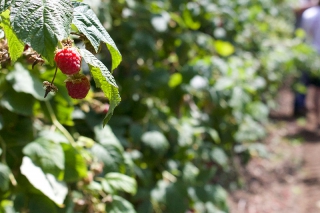
- Raspberries: How does a cool climate – with summer temperatures hovering in the mid-70s and moderate winters – sound? It should sound great if you are a red raspberry farmer. Rob Dhaliwal, Samson Farms owner. Everson, Wash.
- Avocados: Santa Barbara sun, shade and avocados. A California avocado farmer’s perspective on the practices and rewards of avocado cultivation.
- Pears: Preparing a Pear. The benefits of volcanic ash soil, sun and mountain streams are revealed in delicious pears from fresh Anjou to the peeled, poached and canned Bartlett.
- Prunes: From his rodeo fruit farming father to his business partner brother Richard, John Taylor continues his family’s prune farming legacy.
- Beef: Tending to cattle just like family sets the Prescott ranch apart.
- Watermelon: vegetable in disguise or misunderstood fruit? Ask fifth generation watermelon farmer, entrepreneur and agribusiness student Jessie Wiggins.
- Onion: From a WW II Japanese internment camp to a Colorado desert onion farm, two generations of the Sakata family have found a farming home on the range.
- Turkey: Thanksgiving Day turkeys grown from poult with care, love and experience in northern Minnesota. One turkey even turned up in Washington, D.C.
THINK TANK
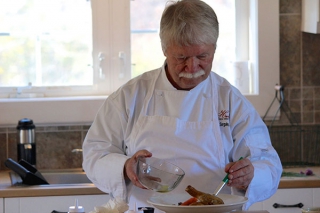
- Witnessing self enlightenment that helps change the world one student at a time. One of the joys of teaching.
- Train the trainers by helping faculty members make it real by staying relevant, thinking differently and getting a good start.
- From politics to profitability, Chef Paul Sorgule gazes into a crystal ball and discusses a different, dynamic and fruitful future for culinary curricula.
- Incorporating nutritional concepts to improve students’ health and the public they will serve – a societal responsibility.
- Problem solving-skills can be taught and must be learned for a successful long-term culinary career.
- The manner in which curriculum is delivered sets the stage for the development of a thirst for knowledge.
- Chef Paul Sorgule defines critical attitudes which help students succeed from day one through graduation and beyond.
- Education as the driver not the passenger. Culinary programs can drive ideation around issues like sustainability, health and urban redevelopment.
- Chef Paul Sorgule helps directors effectively transition excellent chefs into excellent teachers.
- Teaching students is an honor and educators can change the world one student at a time.
- Chef Paul Sorgule focuses on factors that should drive faculty and administrator discussions keeping in mind that resistance to change is a failure formula.
MAYOS CLINIC
Quality Writing

- Encouraging reading beyond assigned work broadens students’ knowledge of quality writing.
- Help students overcome their fear of writing while encouraging well-written papers by asking students to read aloud and presenting them with short, quality pieces to evaluate.
Effective PowerPoint Presentations
- Dr. Fred Mayo identifies elements of an effective presentation and then encourages practicing the presentation to a computer.
- Dr. Fred Mayo dives into a faculty “how to” lesson on designing, writing material, and reviewing PowerPoint presentations.
- Avoid the river of sequential slides by creating a collaborative and thought-provoking PowerPoint presentation.
- Dr. Fred Mayo explains the three major methods for presentation evaluation: self, peer and professional. An added bonus: ready-made student evaluation form.
Building a Positive Classroom Culture
- Honor codes help build a classroom culture now and throughout the year.
- It’s a talented instructor who can turn student mistakes into teachable opportunities.
- Instilling teamwork through creating common goals, effective communication, taking ownership, caring about the process and conflict resolution.
- Dr. Fred Mayo discusses helping students establish and attain goals of excellence.
50 MINUTE CLASSROOM
Understanding the Gluten Gamut
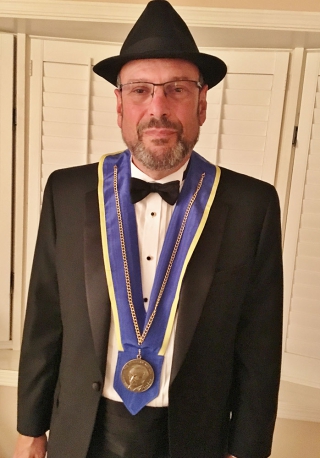
- Culinarians should understand the gluten gamut from gluten free to gluten intolerant.
- Gluten-free cooking offers instructors an opportunity to explore and learn current baking trends.
- Chef Weiner shares his own gluten-free baking recipes with readers.
Lessons Learned When Teachers Become Students
- Avoid tunnel vision by knowing how a dish will be served, keeping an eye on what’s going on around you and asking for help when needed. Useful information in a kitchen and symphonic band.
- When you become a student from your teacher you will be taught how to become a better teacher.
Teaching Topics
- Teaching the bowl trend – beyond poke - at the beginning of the school year.
- Teaching new students mise en place goes beyond completing an ingredient list. How long does it take to make a pizza without mise en place?
- Chef Adam Weiner provides step-by-step pickling instructions which can be followed as closely or loosely as desired.
- Students take the instructing lead when discussing and teaching their own holiday food traditions.
Instructor Resources
- Quotes culinarians appreciate – part two. Chef Adam Weiner highlights his favorite quotes on what it means to be a culinary instructor and general life principles.
- Playing the game “What Would Your Last Meal Be?” reveals much about students and their background while teaching a valuable culinary lesson on the first day of class.
DAVID PAZMINO GUEST SPEAKER
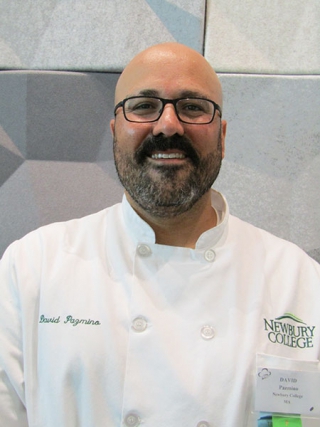
- Creating mini-lectures or stories that relate a lesson’s hows and whys captivates students, helps them retain facts, and develops soft skills.
- A how-to lesson on instructing students with various learning styles derived by going back to the basics.
- QR codes unlock the power of smartphones in the kitchen classroom.
- Chef Pazmino offers excellent suggestions for tools that go beyond the basic requirements for a pastry tool kit from adding a book to a customized wire whisk for drizzling glazes.
- Scaffolding soft performance and organizational skills with core culinary skills allows teaching to happen in production.
- Chef David Pazmino conveys the reality of a bread maker’s monastic life to class and students’ homes while cultivating the love of slow-risen artisan bread.
- Getting back (or going forward) into Metric. Teaching the base 10 metric system to students with confidence and the right tools.
- Handiwork by working with your hands. Chefs and bakers alike learn to cook with all the body’s senses. But, is the sense of culinary touch being lost?
- Providing students with a space to teach themselves to learn is key to lifelong learning and an engaged classroom.
- Teaching why bakeries smell good through training students’ olfactory experiences and creating smell maps of city areas with smell catching and hunting.
- “Sniff, sniff like a dog!” Exploring how to taste using both taste and memory recall for developing knowledge of flavors and textures.
